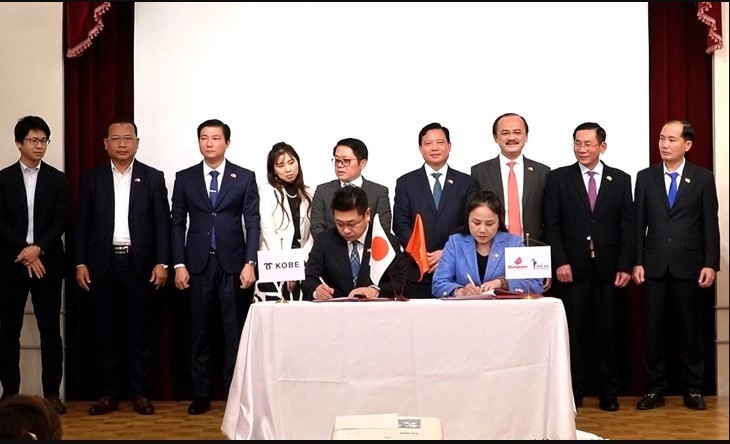The document was inked after nearly a year of discussions, reflecting the commitment of local authorities and business communities to advancing trade promotion, strengthening connectivity, and developing modern, sustainable domestic industrial capacity in preparation for deeper global integration.
    |
 |
|
Delegates at the signing ceremony |
The MoU covers several key areas of cooperation, including efforts to expand shipping capacity and cargo throughput at the two ports; exchanges on modern port management, operation and exploitation; networking with international partners and customers; and joint development of green and smart port models applying advanced management technologies aimed at reducing carbon emissions. It also includes cooperation on training and exchanging high-quality logistics personnel meeting international standards and practices.
The Long An International Port, a newer entrant into Vietnam’s seaport market, has been seeking to broaden cooperation with major international ports to acquire experience, share knowledge and participate in value-added projects. Its partnerships have extended to leading ports such as Oakland, Long Beach, and Portland in the U.S.; Gothenburg in Sweden; Bohaiwan–SPG port cluster in China; and OPASCOR in the Philippines, among others.
Developed by Dongtam Group since 2015, the Long An International Port project cluster has been positioned as a key regional hub for cargo gathering and transshipment. The port has contributed to reducing the workload at Ho Chi Minh City’s port system, easing urban traffic congestion, and significantly lowering logistics costs for enterprises in the Mekong Delta.
For businesses in Tay Ninh and surrounding areas, the port is seen as an engine for investment attraction and an enabler of new development opportunities for industrial zones, clusters, and investors.
The establishment of the strategic partnership with the Port of Kobe is expected to open new prospects for cooperation, reflecting the determination of local authorities and enterprises to boost trade, strengthen connectivity, and enhance modern, sustainable domestic industrial capacity, thereby improving supply capability and supporting deeper participation in regional value chains.
Source: VNA